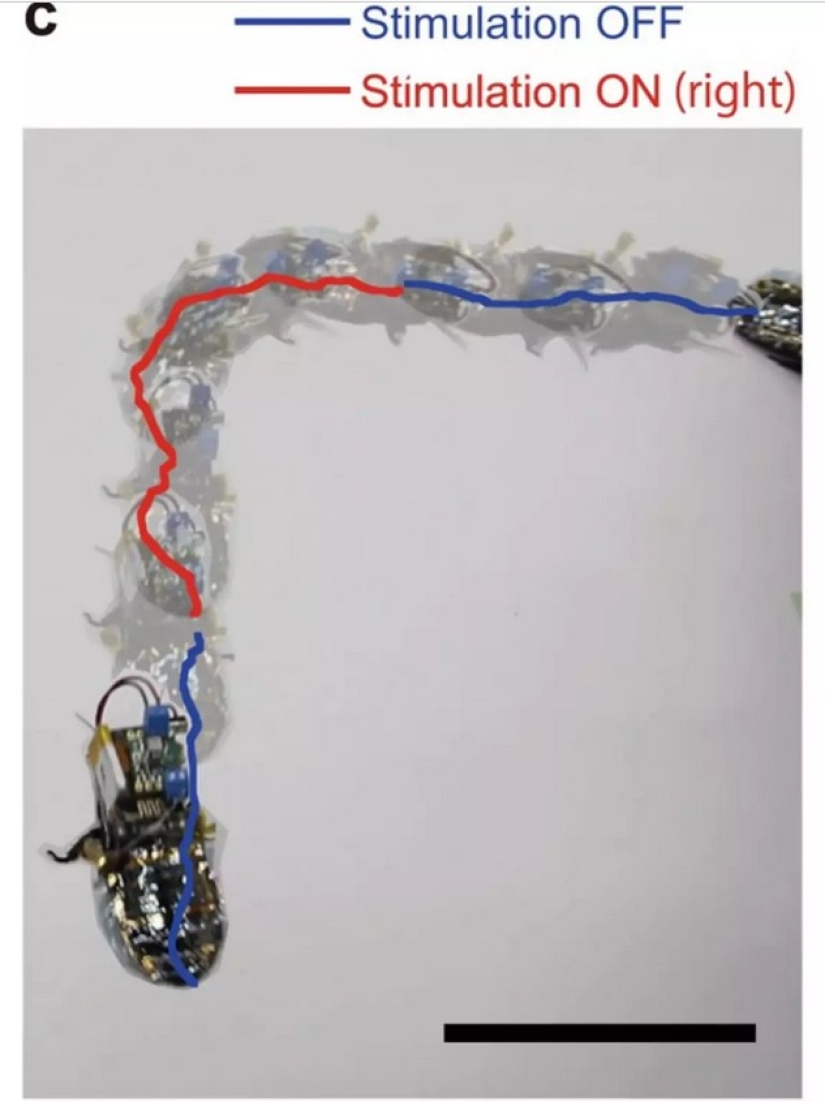In Japan, a cyborg cockroach was created for rescue operations
Categories: Animals | Science | Technology
By Pictolic https://pictolic.com/article/in-japan-a-cyborg-cockroach-was-created-for-rescue-operations.htmlJapanese scientists from the company Riken have learned to control insects remotely. The first steps in this direction were taken when cockroaches were turned into real cyborgs. Since the system that ensures the interaction of the insect and the operator is not quite compact, Madagascar cockroaches were chosen for the experiment. They reach a length of 6 cm and have great strength.

The main equipment for controlling the cockroach was placed in a "backpack", which was attached to the insect's chest. There is a wireless foot control module and a lithium polymer battery. The shape of the backpack takes into account the peculiarities of the cockroach's anatomy, and it was made of plastic on a 3D printer.

A solar cell module was placed on the insect's abdomen, the thickness of which is only 0.004 mm. It consists of several segments, of which some are glued to the abdomen, and others move freely. This design does not restrict the movement of the cockroach at all. It can even bend without risking losing equipment.
Before releasing the cockroaches on an autonomous journey, they were charged in the light for half an hour. Then the six-legged cyborgs were released and the control panel was turned on. With his help, the experimental insects were forced to turn right together, and then left. The cockroaches accurately executed the commands received remotely.

The authors of the development noted that the technology can be used not only with cockroaches. It is suitable for any insects, including flying ones. The only disadvantage of the control device is its dimensions. While the size of the "backpack" and batteries limit the use of the invention. But Japanese experts are sure that these are temporary difficulties and soon they will be able to reduce the module and power supply several times.
The publication Flexible Electronics, the first to present the development, described its purpose. Cyborg insects will be able to save human lives by searching for victims under the rubble of buildings. Also, small scouts can be sent to places where it is dangerous for a person to be because of harmful factors, for example, radiation. Cyborgs crawling and flying will be able to monitor the environment.

Today, miniature robots are used to perform these tasks. But they are not as compact as scientists would like. In addition, the development and manufacture of such mechanisms are too expensive, so there are very few of them. Insect management technology will provide small assistants to all services that need it. However, there is no information yet when cyborgs will be ready for mass use.
Finally, Madagascar cockroaches, which are eaten in many countries, have come up with a worthy use.
Recent articles

Twitter user @FactBuffet collects interesting facts about everything. Today we bring to your attention another series of facts that ...

Aomori Prefecture in the north of the Japanese island of Honshu is an agricultural region famous for its delicious apples. In ...

Imagine a baby vampire or a tiny zombie with glass eyes ... An artist from the USA Bean Shanine specializes in creating such ...